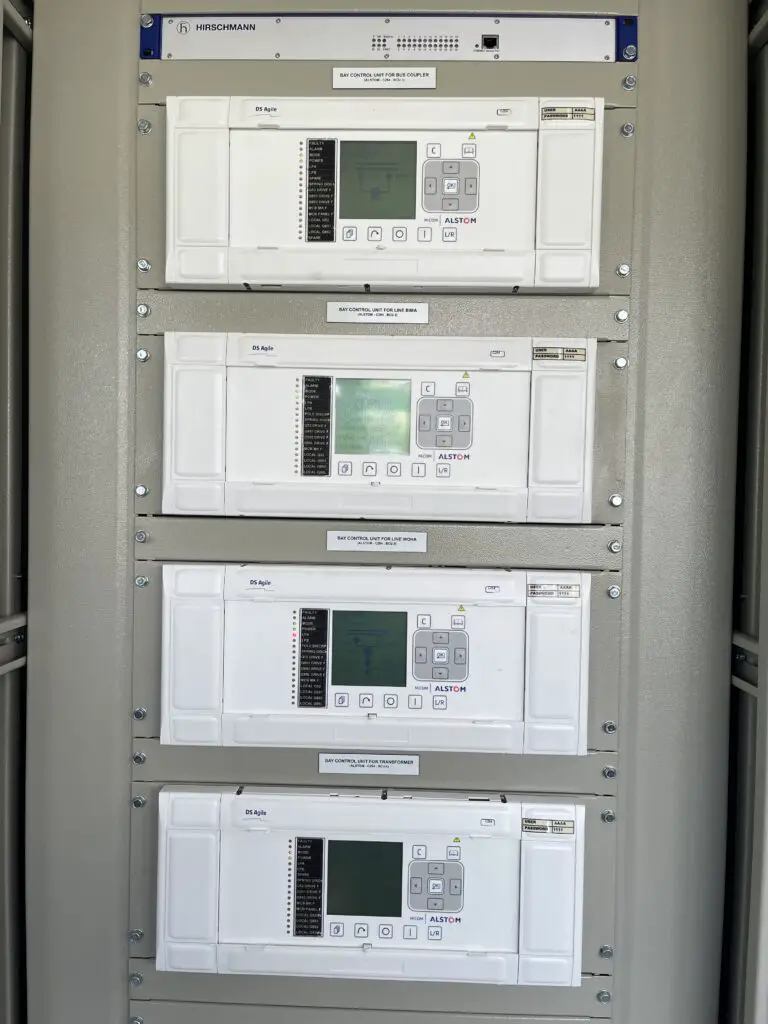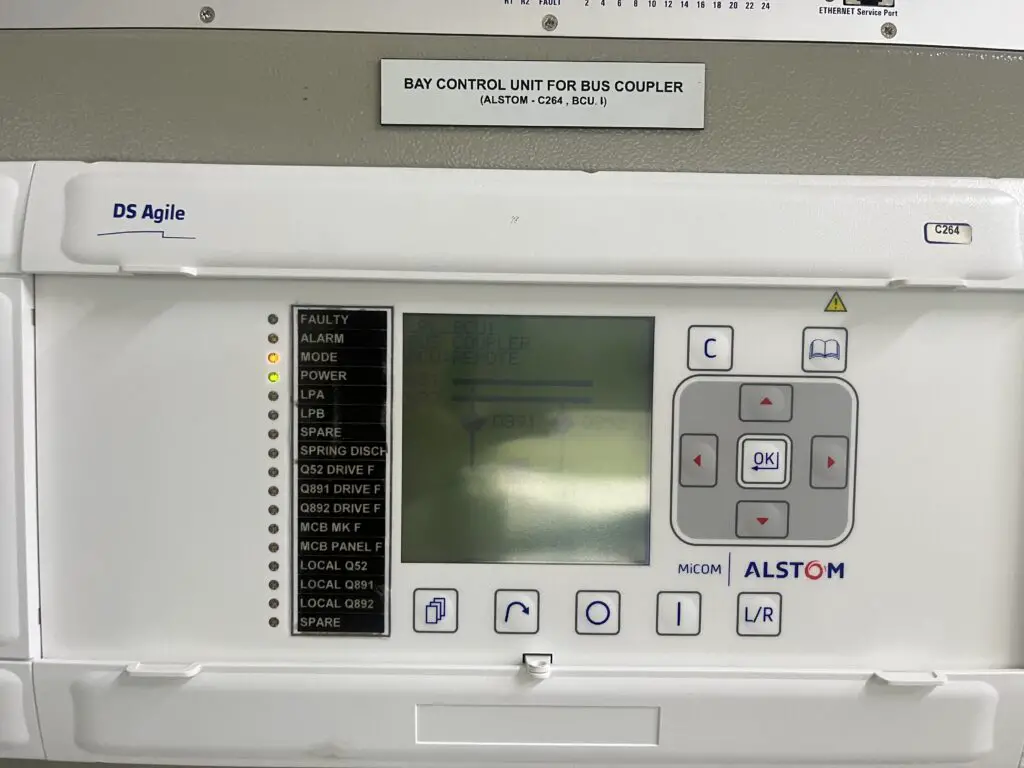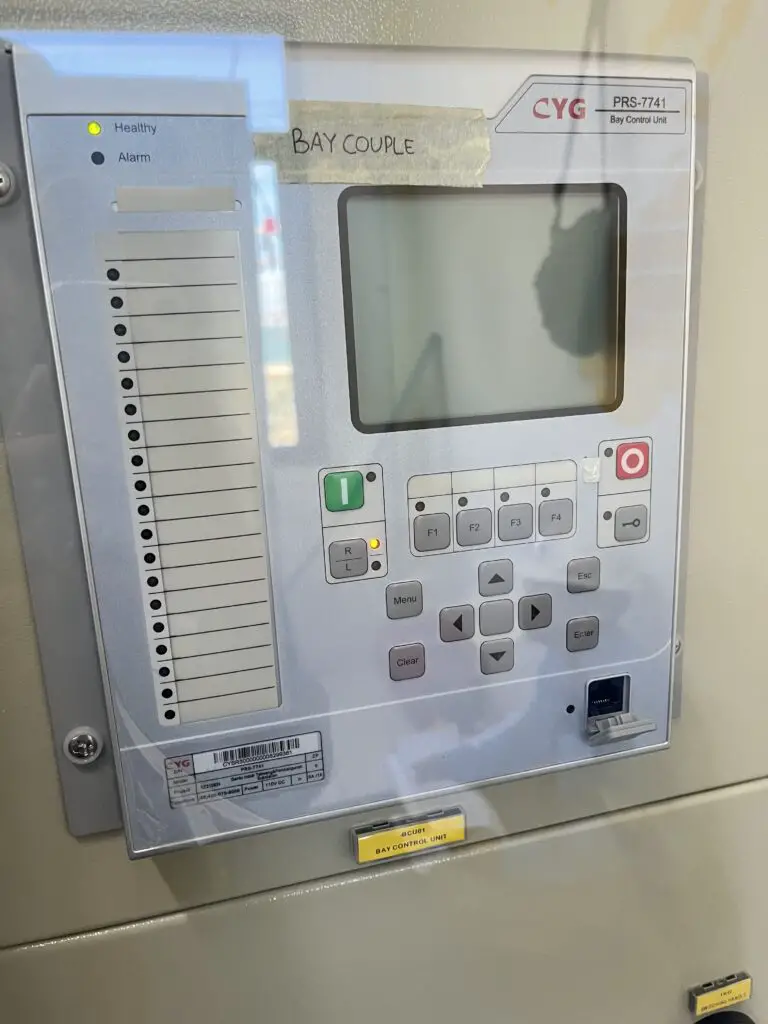Contents

BCU: Bay Control Unit
The Bay Control Unit (BCU) plays a crucial role in the automation of substations. Acting as a translator, the BCU converts analog data from switchgear into digital data, enabling remote control and monitoring of the substation’s real-time condition. This can be done either through a local Human Machine Interface (HMI) or via a higher-level protocol.
One of the key functions of the BCU is to provide information about the status of primary equipment through auxiliary contacts. This allows operators to detect and indicate whether the circuit breaker is in the CLOSED or OPEN position, as well as any faults or intermediate positions. By providing this information, the BCU helps ensure the smooth and efficient operation of the substation.
With the BCU’s ability to convert analog data into digital data, it becomes easier to control and monitor the substation remotely. This not only enhances the overall efficiency of the substation but also improves the safety of the personnel involved. By having access to real-time information, operators can make informed decisions and take appropriate actions promptly.
In summary, the Bay Control Unit (BCU) is an essential component of a substation automation system. Its specific function of translating analog data to digital data enables remote control and monitoring, providing operators with valuable information about the status of primary equipment. This helps ensure the smooth operation of the substation and enhances overall efficiency and safety.
Isolate the task of Control and Protection

Using a Bay Control Unit (BCU) in the power distribution system is crucial for preventing blackouts and ensuring the smooth operation of the power system. While analog technology can also be used for monitoring, the BCU offers greater flexibility and efficiency. By isolating the task of control using the BCU and the task of protection using another Intelligent Electronic Device (IED), the power system can be effectively secured.
The BCU, with its ability to convert analog data into digital data, allows for remote control and monitoring of the power system. This means that operators can easily access real-time information about the status of primary equipment, such as the position of circuit breakers and any faults or intermediate positions. With this information, operators can make informed decisions and take prompt actions to ensure the smooth operation of the power system.
By separating the task of control using the BCU and the task of protection using another IED, the power system can be better secured. Different protection schemes can be implemented to detect and respond to various faults and abnormalities in the system. This ensures that the power system remains stable and reliable, minimizing the risk of blackouts and disruptions.
In conclusion, using a BCU to isolate the task of control and protection in the power distribution system is essential for preventing blackouts and ensuring the smooth operation of the system. By utilizing digital technology and separating the tasks, operators can effectively monitor and secure the power system, enhancing its reliability and efficiency.
The benefit of using BCU

The benefit of using BCU goes beyond just isolating the task of control and protection. Here are some key advantages of incorporating a Bay Control Unit into the power distribution system:
1. Minimize failure operation of the power system distribution: By utilizing a BCU, the power system can be better protected against failures and disruptions. The BCU allows for real-time monitoring of primary equipment, such as circuit breakers, and can quickly detect any faults or abnormalities. This enables operators to take prompt actions to prevent further damage and ensure the smooth operation of the power system.
2. Support for control and monitoring from the Local Human-Machine Interface (HMI) using the IEC-61850 protocol standard: The BCU enables operators to have direct control and monitoring capabilities from the Local HMI. This means that operators can easily access and manipulate real-time data about the power system, making it more efficient and convenient to manage and troubleshoot any issues that may arise.
3. Support for control and monitoring from the Center using IEC-60870-5-101 or IEC-60870-5-104: In addition to local control and monitoring, the BCU also allows for remote control and monitoring from a centralized location. This is achieved through the use of industry-standard protocols such as IEC-60870-5-101 or IEC-60870-5-104. With this capability, operators can effectively manage and monitor multiple substations from a central control center, enhancing the overall efficiency and reliability of the power distribution system.
By leveraging the benefits of using a BCU, power system operators can minimize failures, improve control and monitoring capabilities, and enhance the overall reliability and efficiency of the power distribution system.
Final thought
The Bay Control Unit (BCU) plays a crucial role in ensuring the smooth operation and reliability of the power distribution system. By isolating the task of control and protection, the BCU offers several benefits that enhance the overall efficiency of the system.
Firstly, incorporating a BCU helps minimize failure operations of the power system distribution. With real-time monitoring capabilities, the BCU can quickly detect any faults or abnormalities in primary equipment like circuit breakers. This enables operators to take prompt actions to prevent further damage and ensure uninterrupted power supply.
Secondly, the BCU supports control and monitoring from both the Local Human-Machine Interface (HMI) and a centralized control center. Operators can access and manipulate real-time data about the power system, making it more efficient to manage and troubleshoot any issues. This capability also allows for remote control and monitoring of multiple substations, enhancing the overall reliability and efficiency of the power distribution system.
In conclusion, the Bay Control Unit (BCU) is an essential component of the substation automation system. Its ability to isolate control and protection tasks, along with its support for local and remote control and monitoring, greatly improves the reliability and efficiency of the power distribution system. By leveraging the benefits of using a BCU, power system operators can ensure uninterrupted power supply and minimize failures, ultimately meeting the increasing demand for reliable power in various applications. Just in case, you can check the Siprotec 5 BCU from Siemens.

You must be logged in to post a comment.